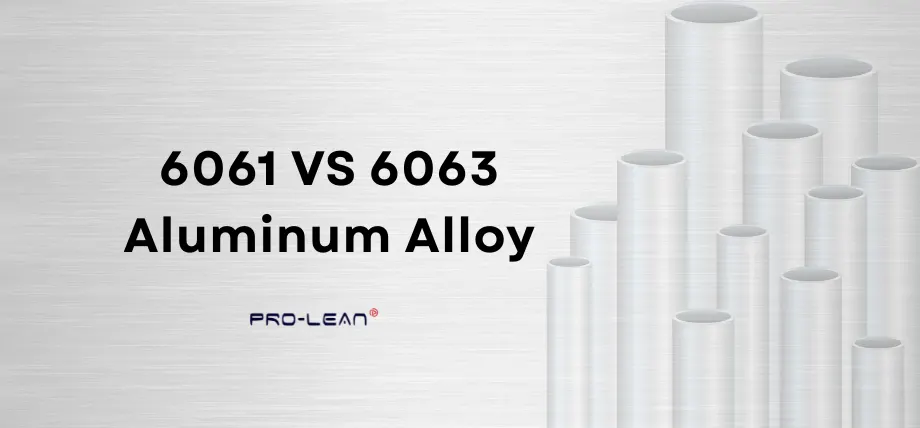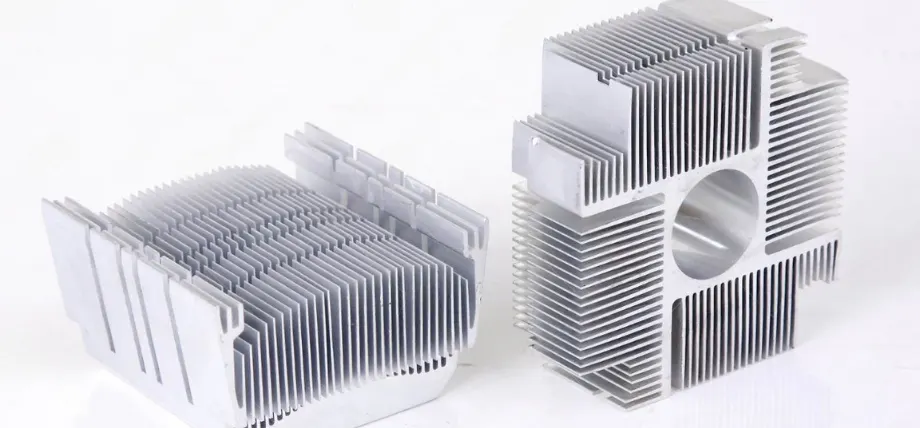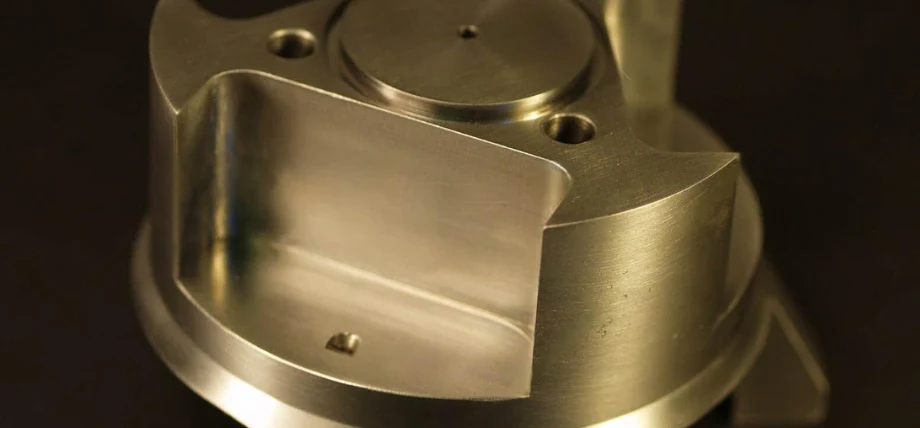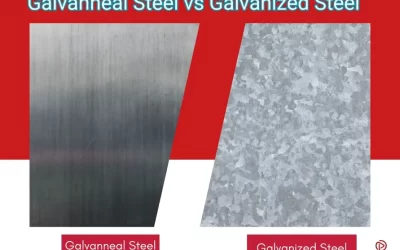
6061 VS 6063 Aluminum Alloy
Aluminum 6061 and 6063 are both versatile alloys that can be heat-treated and are used in various applications. Specifically, 6063 is called architectural alloy because of its formability and use in architectural trims.
6061 is a high-strength aluminum alloy with an excellent strength-to-weight ratio and is also used for structural applications. There are many things that separate both aluminum alloys, in this blog you’ll learn about their composition, properties, and what differentiates 6061 from 6063 aluminum.
What Is Aluminum Alloy Grade?
An aluminum alloy is made when aluminum is mixed with other metals or non-metals in the molten state to alter the properties of pure aluminum. All aluminum alloys are standardized and assigned grades to identify their composition and properties.
The four-digit grading system used for aluminum alloys classifies 6XXX alloys as magnesium and silicon-based alloys.
Both 6061 and 6063 fall in the same general aluminum grade and the last two digits specify the alloy within the series.
Aluminum 6061 VS 6063 Mechanical & Physical Properties
|
Property |
Aluminum 6061 |
Aluminum 6063 |
|
Composition (alloying elements) |
Al (95.8 – 98.6) Cr (0.04 – 0.35 ) Cu (0.15 – 0.4) Fe (Max 0.7) Mg (0.8 – 1.2) Mn (Max 0.15) Si (0.4 – 0.8) Tn (Max 0.15) Zn (Max 0.25) |
Al (Max 97.5) Cr (Max 0.1) Cu (Max 0.1) Fe (Max 0.35) Mg (Max 0.45 – 0.9) Mn (Max 0.1) Si (0.2 – 0.6) Ti (Max 0.1) Zn (Max 0.1) |
|
Tensile Strength |
124 MPa |
241 MPa |
|
Yield Strength |
55.2 MPa |
214 MPa |
|
Hardness (Brinell) |
30 |
73 |
|
Density |
2700 kg/m3 |
2700 kg/m3 |
|
Thermal Conductivity |
180 W/m K |
200 W/m K |
|
Electrical Resistivity |
3.66 x 10-8 ohm/m |
3.32 x 10-8 ohm/m |
Source: Matweb
Aluminum 6061 VS 6063 Machining Properties
|
Property |
Aluminum 6061 |
Aluminum 6063 |
|
Extrudability |
Low |
Excellent extrudability and good flow |
|
Weldability |
Good |
Good |
|
Machinability |
30 % |
50% |
|
Surface Finish |
Good with visible tool marks |
Excellent |
|
Formability |
Moderate, hard to bend |
Easy to bend and shape |
|
Tool Wear |
Low |
Low |
Application Comparison of 6061 VS 6063
Aluminum 6061 and 6063 have drastically different applications.
Structural Support and Components
For structural components like trusses, support beams, and heavy-duty frames that require lightweight structures that can bear heavy loads aluminum 6061 T6 is used. The T6 temper is heat treated 6061 alloy with increased tensile strength.
Aluminum 6063 is rarely used in structural applications because it has a lower tensile strength.
Architectural Applications
Aluminum 6061 is ideal for architectural applications but 6063 has better formability and can be drawn and extruded for architectural applications. Since most window frames and trims are extruded,
Marine Applications
Aluminum 6061 is better suited for marine and saltwater applications because it has better strength, wear resistance, and corrosion resistance. Most aluminum 6061 use anodized aluminum for further protection. 6061 aluminum is used in railings, masts, and hulls.

Polished Aluminum Cleat
Aerospace Parts
Aluminum 6061 T6 is a popular choice for aerospace components and machined parts. It is lightweight and passes aerospace standards and testing. 6061 has high strength-to-weight ratio and is used for fuselage and rivets.
Heat Sinks
Both 6061 and 6063 aluminum alloys are used for heat sink manufacturing. 6063 has an advantage because it is more formable and has slightly higher thermal conductivity. Finned shapes and thin leaves are easier to form using 6063 alloys.

Aluminum Heat Sink
Key Differences Between 6061 and 6063 Aluminum
Tensile Strength
Tensile strength is the property of a material that defines the maximum stress it can handle without necking (deforming). Aluminum 6061 T6 has a tensile strength of 310 MPa and is significantly stronger than 6063.
Aluminum 6063 T6 has a tensile strength of around 186 MPa which is sufficient for a few structural applications where strength isn’t a concern.
Weldability
The weldability of 6061 aluminum is excellent and it can be welded using the most common welding processes like TIG welding, and MIG welding. Aluminum welds can also withstand significant loads. Aluminum 6063 also has excellent weldability.
Machinability
Aluminum 6061 has a machinability rating of 30%. Machining 6061 produces sticky chips and is tougher to machine than 6063. The chips are also shorter and require lubrication for the simplest cuts.
Aluminum 6063 has a machinability rating of 50% and is easier to cut and shape. It is softer and requires less force and speed to cut. It produces longer stringy chips that can require chip cleanup for precision machining applications.
6061 or 6063: Which Is Better For Corrosion Resistance?
Both aluminum alloys have similar corrosion resistance, but 6061 with magnesium and silicon has better performance in harsher conditions like saltwater. 6063 aluminum alloy performs well in mild corrosive environments.
6061 performs better in harsh conditions because the increased strength helps resist stress-corrosion cracking.
Selecting Between 6063 VS 6061 Aluminum Alloy
Choosing between 6063 vs 6061 aluminum alloys requires careful consideration of the final application and properties like strength and thermal performance.
Load Bearing Applications
For most load-bearing applications, 6061 and its heat-treated tempers provide a higher strength and ability to handle mechanical stresses. For mechanical chassis, heavy during pipies and bike frames, Aluminum 6061 is a better choice.
Harsh Environments
6063 has better corrosion resistance in mild environments and general-purpose applications. But, aluminum 6061 performs better in harsher saltwater and marine applications. It can resist stress cracking better than 6063 making it ideal for high-stress corrosive environments.

Aluminum Jet Body
Machining
6061 is tougher to machine, but it provides cleaner cuts and shorter chips. It is far better in precision machining components accurately.
Complex Shapes
For complex shapes, aluminum 6063 is a better choice because it is easier to form and extrude with a cleaner surface finish. It flows easily can can be drawn into different shapes.

Aluminum Part With Good Surface Finish
Thermal Applications
Aluminum 6063 has a higher thermal conductivity (200 W/m K) and formability making it ideal for making fins and heat sinks for heat dissipation in electronics.
Conclusion
Aluminum 6061 and 6063 are popular alloys with distinct applications. Aluminum 6061 has better structural and load-bearing strengths and properties and 6063 has better extrudability and aesthetics.
If you plan to use aluminum for architectural applications, 6063 is a better choice for aesthetics and anodizing. It gives a smooth finish for decorative trims and heatsinks.
High-Quality Aluminum Machining Partner
Bring your aluminum project from design to a finished prototype with our precision and quality. Partner with Prolean-tech for high-quality aluminum machining and fabrication.
At Prolean-tech, we boast a vast material library with many commercial aluminum grades tailored to your requirements.
FAQ
-
Which is better, 6061 or 6063?
6061 has better strength, better corrosion resistance, and performs well under structural loads. 6063 has a higher melting point, thermal conductivity, and heat capacity. 6063 aluminum is better suited for architectural applications and heat sinks.
-
Is 6061 better than 6063 anodizing?
6063 aluminum anodizes better than 6061 because it has a smoother surface finish and consistent alloy composition, which is another reason why 6063 is popularly used in architectural applications.
-
Is 6061 T6 stronger than 6063 T52?
Aluminum 6061 T6 has almost twice the tensile strength of aluminum 6063 T52.
-
Why use 6063 aluminium alloy?
Aluminum 6063 has better formability (ability to be bent and shaped) which makes it ideal for architectural trims and aluminum profiles. Aluminum 6063 can be easily extruded into different shapes and thinner fins can be made because of its easier machinability. It has better thermal conductivity, making it ideal for heat sinks as well.




0 Comments